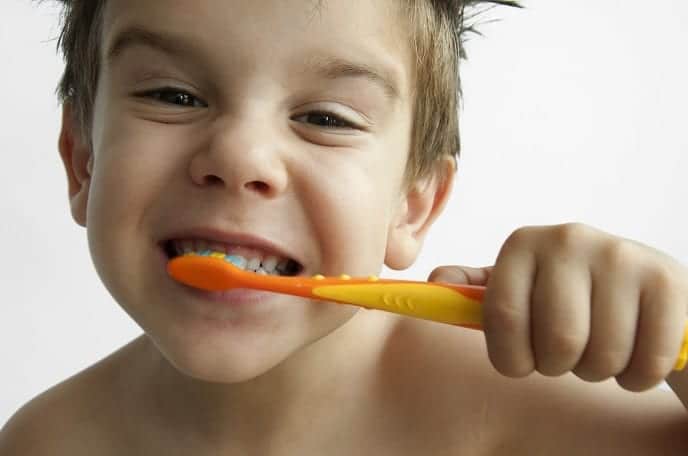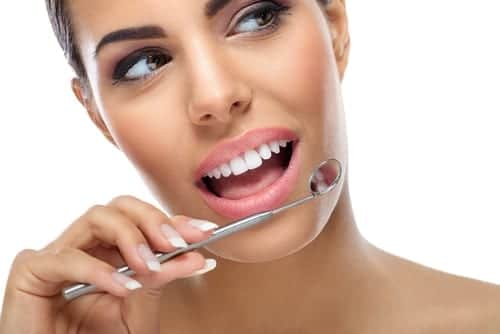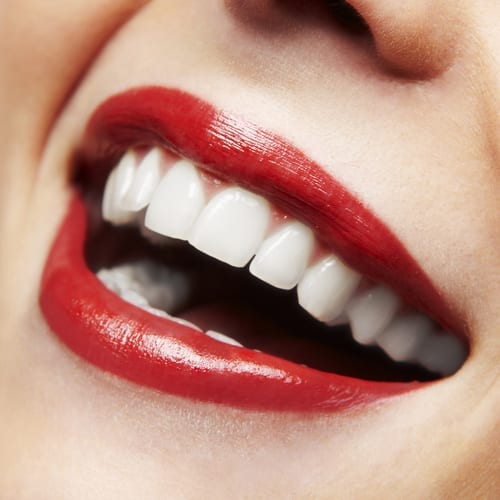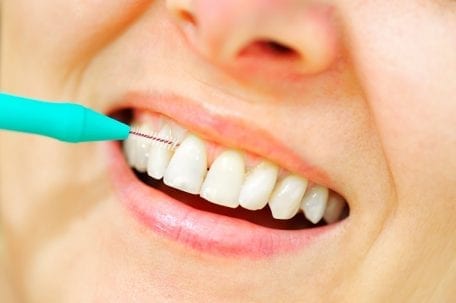It’s considered a given that everyone should take care of their teeth. Why? Besides wanting to keep your pearls beautiful, another more sensible reason is because root canal therapy costs $300 to $2,000, crowns cost $500 to $3,000, and dental implants cost $3,000 to $,4,500. No sane person would want to spend amounts if they can help it.
Even if you have ample coverage through your company’s insurance or private dental insurance, the pain of having to go through a root canal or endodontic therapy as well as deep cleaning to keep your risk for periodontitis low can be quite painful after the anesthesia wears off. It’s obvious that no one would want to go through such suffering.
Even with the existence of dental tourism, which significantly reduces the expensiveness of such procedures while giving you the opportunity to vacation in places like beautiful Bangkok, it isn’t worth the hassle of having unhealthy gums in the first place. Needless to say, an ounce of prevention is always best and much better than a pound of expensive, painful, and time-draining cure.
The Basics of Dental Maintenance

At its most basic, dental upkeep requires you to brush three times a day or after every meal. You should also gargle with mouthwash to get rid of bacteria and floss to get rid of stuck food in between teeth for good measure. You should use the best and right oral care products on top of being mindful of your daily habits. It can also involve being careful with your diet because the less sugars you eat the less likely bacteria will consume them and turn your mouth acidic enough to cause tooth decay.
The six ways to keep your gums healthy are as follows:
1. Floss: According to the American Dental Association or ADA, you should floss after eating or at least once every day. You want to remove the food that’s beyond the reach of your toothbrush as well as the plaque that’s building up on your teeth. Oh yes, aside from moving your floss in between the gaps of your teeth, you should also master the technique of scraping the teeth surface with your floss for maximum flossing action. It doesn’t really matter when you floss, whether it’s in the morning or after eating lunch. Just do it.
2. Quit smoking: According to the Centers for Disease Control and Prevention or CDC, smoking destroys not only your respiratory system but also your oral system. It makes y our teeth yellow, destroys your gums, and increases your risk for gum disease. Furthermore, smoking is capable of weakening your immune system, so it becomes harder to fight off a gum infection until it’s too late. Your gums also have a harder time healing once they’ve been damaged. Not to mention the severity of your halitosis or bad breath when you’re smoking!
3. Use mouthwash: According to the ADA again, you should use therapeutic, over-the-counter or OTC mouthwash. It’ll help in the reduction of the speed that tartar develops, prevent or decrease gingivitis occurrences, and stop plaque in its tracks. Rinsing your mouth with mouthwash assists in removing debris and food particles from your mouth, even though it’s not a substitute for brushing or flossing. Look for the ADA seal of approval on your mouthwash product or its equivalent in your locality. This certifies that it’s been deemed safe and effective for use.
4. Brush twice a day: Actually, the old adage is brush three times a day or brush after every meal. If you can’t do three at least do two or brush after lunch and dinner. Doing this assists in the removal of plaque and food trapped between your gums and teeth. Don’t forget to scrub your tongue for good measure because it can harbor bacteria as well. According to the Mayo Clinic, your toothbrush of choice should have soft bristles on it so as not to damage your gums and teeth, which can lead to further dental destruction or infection risk.
You should consider investing in an electric or battery-powered toothbrush too if you can afford it. This is because it helps reduce your plaque and gingivitis more than manual brushing ever can. What’s more, most people don’t know how to properly brush manually so having an electric toothbrush can automate the process for you. You should also swap toothbrushes or toothbrush heads every 3-4 months of regular use because once the bristles start to fray the effectiveness of such a toothbrush is significantly reduced.
5. Get regular cleanings: There are times when you should go straight to your dentist in order to professionally clean your mouth. Do so every six months or twice a year. Not only is your dentist good at cleaning your mouth and teeth deeply with prophylaxis. He can also detect any early symptoms of gum disease whenever you see them on the regular. This way, he can treat your condition before it becomes worse. Professional cleaning is the only way you can remove tartar. Brushing, flossing, or rinsing isn’t enough. You need a combination of all that plus regular cleanings to help reverse gingivitis.
6. Use fluoride toothpaste: Store shelves are usually filled with toothpaste brands claiming to whiten your teeth, freshen your breath, and reduce your gingivitis. How can you tell which ones are most effective and which ones are less ideal for your dental needs? Simply pick the toothpastes with the ADA seal or some other local certification as well as those that contain fluoride. From there, choose whatever flavor you want, whether it’s mint or bubblegum.
When you brush, floss, or rinse your mouth first doesn’t matter. What matters is that you do a good job of it and use the right dental maintenance products every time when all is said and done.
Getting into Advanced Dental Maintenance

Now that you’ve learned the basics, let’s dive into the nitty-gritty or the details of dental maintenance, specifically the reasons behind each advice and the consequences of not doing them.
• Don’t go to bed without brushing first: Don’t sleep on unbrushed or uncleaned teeth! The average person sleeps 8-10 hours, which is more than enough time for the bacteria inside your mouth to do their dirty deeds and slowly make your teeth become decayed, weakened, and/or holey. You shouldn’t only brush your teeth twice a day, you should also make sure you avoid any midnight snacks leaving you with unbrushed teeth for hours-on-end until you wake up in the morning. Neglecting brushing your teeth after dinner is a bad idea because that might be your chance to get rid of plaque and germs that have accumulated throughout the day.
• Treat flossing as important as brushing: Don’t neglect to floss. Even if you brush everyday, those bits of food that you missed can still lead to bacterial development, plaque, acid, and dental caries when push comes to shove. Flossing isn’t just for those little bits of broccoli or corn that you notice is suck between the gaps of your teeth. It’s something you should use to stimulate your gums, reduce plaque formation, and lower the area’s inflammation rate.
You can enjoy all those benefits and more by simply flossing once a day. Unlike with brushing your teeth, you can get away with only flossing every day instead of after every meal. Don’t let the difficulties in flossing stop you from doing it either. Many young children who are inexperienced or even grownups with arthritis don’t want to deal with pushing a thread over teeth gaps. However, you have to do it. Luckily, there exists ready-to-use dental flossers and other tools available that can streamline the flossing process.
• Don’t neglect your tongue: Plaque doesn’t only accumulate on your teeth surface as white film. It can also build up and coat your tongue with its creamy texture. This doesn’t only lead to foul bad breath but also to a whole host of oral health issues. In order to prevent dental degradation in the future, it’s only prudent for you to brush your tongue gently with your toothbrush as well every time you brush your teeth. This way, you can ensure zero chances of the plaque spreading. Any percentage of plaque in your mouth will lead to bacteria spread, infection, and tooth decay.
• Appreciate the importance of fluoride: As mentioned earlier, you should use fluoride toothpaste. It should also help to brush in areas where your tap water is also fluoridated to boot. Fluoride is a more important ingredient than flavors and whitening powder. Regardless of the version of toothpaste you choose, make sure it contains fluoride because it’s known to harden the enamel or outer shell of your tooth. This reduces your risk of decay or helps strengthen teeth that have been exposed to bacterial waste products and acid.
Although fluoride has become a scrutinized ingredient by those worried about how the chemical can impact your other areas of health outside of oral health, it remains a mainstay when it comes to ensuring the wellbeing of your teeth. Aside from calcium, fluoride is your main defense against weakening enamel. It also works by fighting the decay-causing germs on top of hardening that toothy shell and serving as a protective barrier for your teeth.
• Consider the virtues of mouthwash: Many people skip mouthwash even though ads make it seem necessary for oral health and dental longevity. It assists people threefold, actually. It re-mineralizes teeth like fluoride, cleans areas that are hard to brush, and reduces the amount of acid in your mouth. Mouthwash helps bring your oral maintenance requirements into balance by catching up with anything your flossing and brushing has missed. Ask your dentist for recommendations when it comes to medicated, antibacterial, or even prescription mouthwash.
• Learn to brush properly: Barring an electric toothbrush, you should also learn how to brush properly with an ordinary or “manual” toothbrush. It’s equally important to know how to brush because doing a poor job of brushing your teeth is almost as dire as not bothering to brush at all. You should be methodical and patient with your brushing. The brush shouldn’t be moved back and forth then up and down. Instead, to cover the maximum amount of dental real estate, you should use gentle, circular motions. You can end up with early gum disease or gingivitis with calculus buildup due to accumulated plaque.
In regards to brushing once a day as opposed to thrice a day, studies have shown that once a day isn’t enough but twice a day is a workable compromise to brushing after every meal of the day, from breakfast to lunch to dinner. You should also brush after meals in order to get rid of food remnants in your mouth before bacteria have the chance to eat, digest, and turn it into acid. In order to better access your back teeth, choose a toothbrush head that’s small. Soft bristles are less likely to wound your gums. Brush gently but thoroughly like you would wash your hair. The amount of time your brush should take from 2-3 minutes.
• Drink more water: Instead of drinking soda pop or juices, you should make it a point to drink water. It remains the best health drink that comes relatively cheap even in bottled form unless you’re buying Perrier or something. As a rule of thumb, you should drink water after every meal. This assists in your oral health by washing away some of the effects of acidic or sticky foods as well as sugary beverages in between brushing your teeth. Don’t rely on brushing alone to wash that acidity down.
• Limit consumption of sugary and acidic foods: Speaking of acidity and sugary food, you should avoid them as much as possible. Sugar is ultimately converted into acid in your mouth upon contact with your saliva. This in turn erodes your teeth enamel. It doesn’t help that bacteria feeds on starches and food bits and converts them to acid on top of the sugar that’s immediately turned into acid your mouth. Acidic fruits, coffees, and teas can also do their part in wearing down the enamel. Be mindful of such foods and beverages if you want to maintain your oral health.
Conclusion

It takes a lifetime of carefulness to achieve healthy teeth. Even if you’ve been told that your teeth are nice, it’s important to follow the right steps all day every day in order to maintain that niceness for an extended period of time. You should encourage yourself to develop positive habits that will lead to great teeth as you age so that you won’t have to end up spending thousands of dollars on dental implants and bridges or hundreds of dollars on removable dentures you have to put into a glass of water every night when you sleep.
Thantakit International Dental Center is Thailand’s longest established dental center. Situated in Bangkok, our clinic is renowned across the world as a destination for world-class dentistry, with most of our patients flying to us from Australia.
Please contact us today and get a FREE dental consultation.












